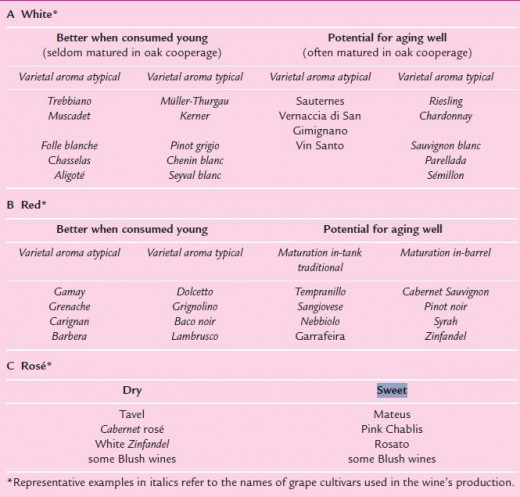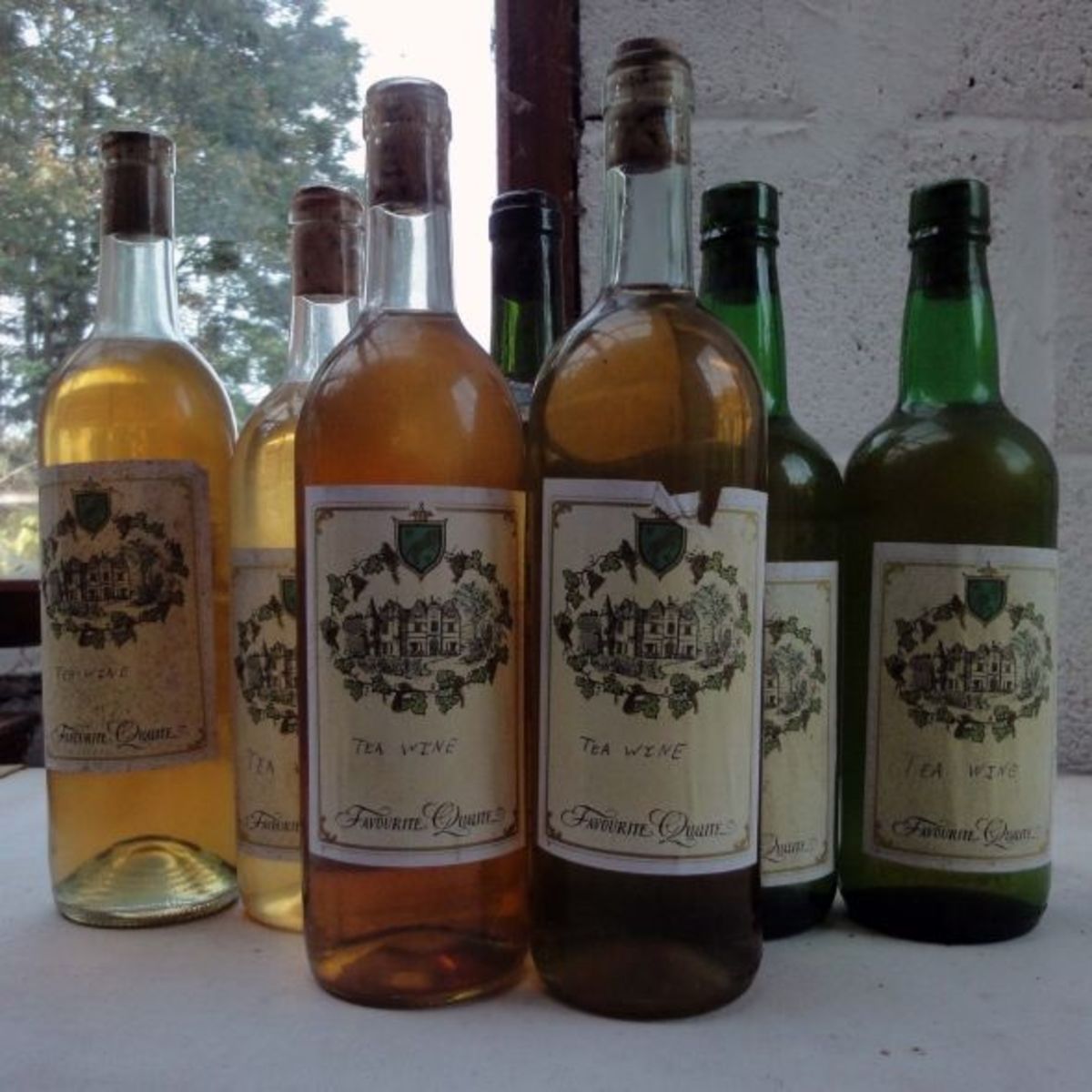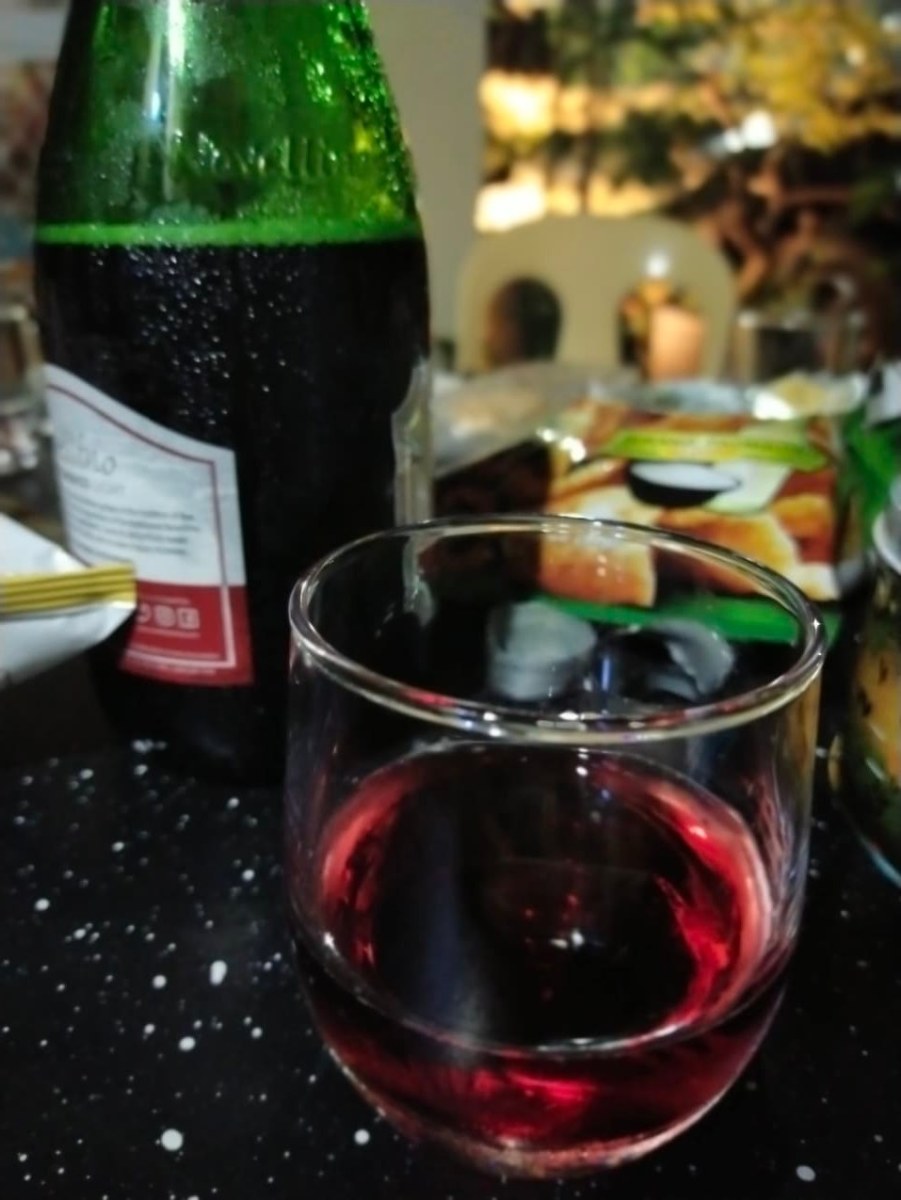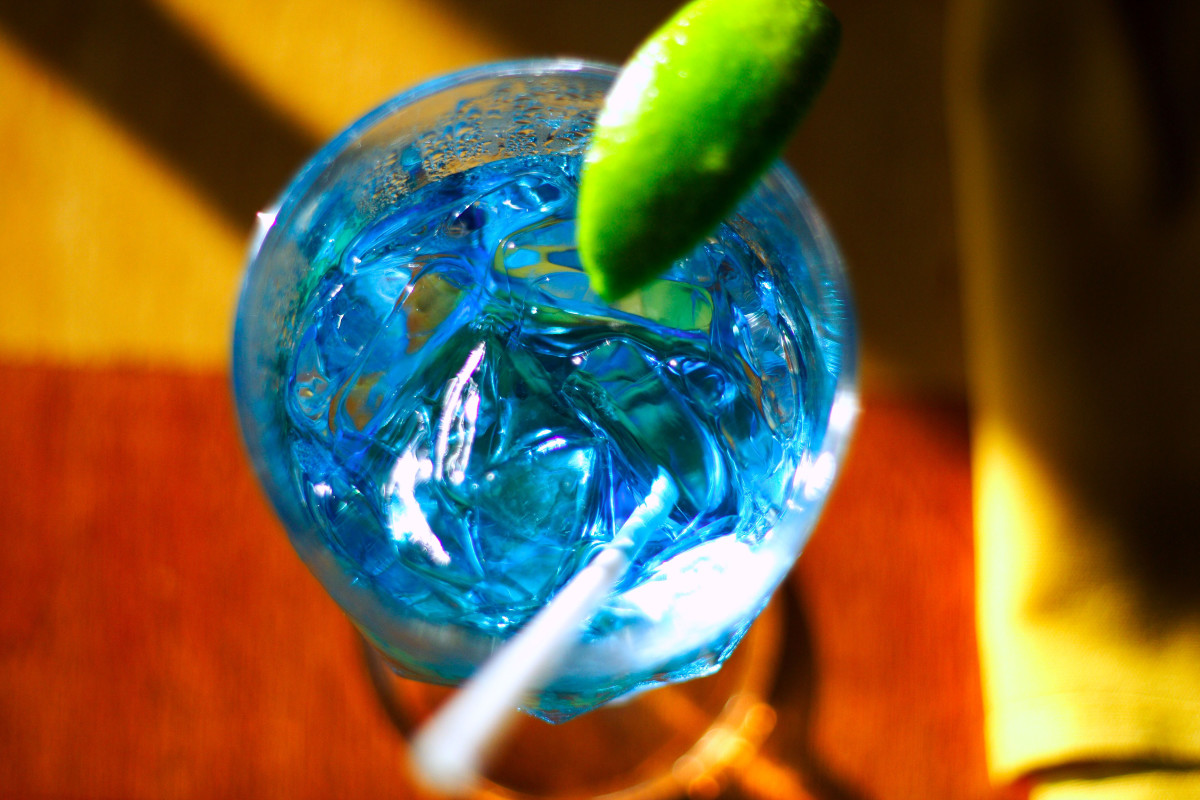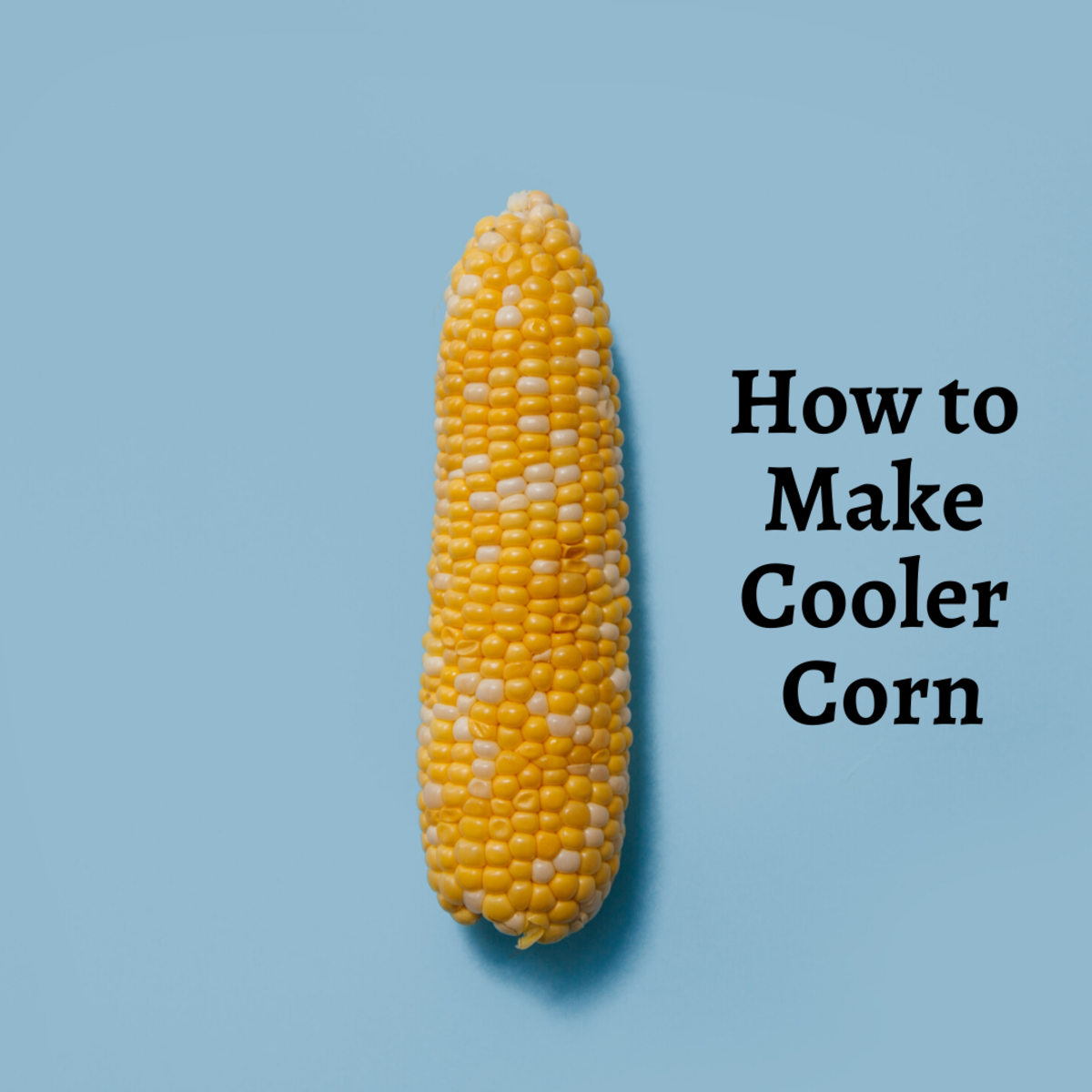Chardonnay or Pinot Grigio: Understanding Your Wine
Need Help Understanding wine vocabulary? See:

© Nicole Paschal, All Rights Reserved
After living in Europe, I learned that possessing some knowledge of wine and wine pairings is quite common, even for the average individual. Although sommeliers (professional wine-tasters) engage in the intensive study of biology, chemistry, and history amongst other subjects to become experts in fine wines, the truth is that people like you and I can also learn some of the skills of their trade. Whether as a hobby, for dinner parties, or to impress family and friends, a firm knowledge of wine and wine tasting is always an asset. Read below for an easy to understand introduction to basic wine categorization.
Old World Wines vs. New World Wines
Perhaps the broadest classification for wine is whether its origins were cultivated in the old or new world. Although this categorization is becoming more blurred as the various nature of wines grow, it still can be a beginner’s way of deciphering which wines may be proper for certain occasions. Simply, Old World wines are those that arise from Europe. Any wine outside of Europe, whether it be out of S. Africa, Chile, or California is a New World wine. New World wines typically possess a more fruitier taste. Rather than saying fruity, a connoisseur may use the term “fruit forward.” Old World wine is generally more acidic and that is just one element, amongst others, that contribute to a more earthen taste. Other trends tend to be that New World wines are higher in alcohol due to the longer, hotter growing seasons producing a riper and sweeter grape that converts to alcohol through number of chemical processes. It is not only a matter of climate since Old World wines are deemed as an accompaniment to food. Sweeter, fruitier, New World style wines are best sipped alone, without a pairing. It is very difficult, if not entirely impossible to make a New World wine into an Old World sort. However, the reverse is possible. When an Old World wine is made fruitier to expand its market, it is called an International Style wine. Manufactured wines, on the other hand, are mass produced brands such as Yellow Tail.
Still, Sparkling, and Fortified Wines
Still wine lacks effervescence, which is the escape of bubble producing gases within the fluid. Simply, like the term suggests, it is still and not bubbly. Sparkling wine has a marked effervescence and fortified wines are those where alcohol is supplemented into the wine. Generally, still wines are between 9% and 14% alcohol; whereas fortified wines range between 17% and 22% alcoholic content per volume.
White Wines
White wines are known for a refreshing mouth-feel, fruity bouquet, and enhanced acidity. A cool and slightly complicated fermentation process allows white wines to retain their fruitiness. Since it is capable of hydrolyzing back to its acidic and alcoholic state quite easily, the cooling process acts like a stasis. Therefore, it retains the taste and fragrance needed. There are three white wines commonly respected for their aging potential: Riesling, Chardonnay, and Sauvignon Blanc. With these three specifically, the fading of the fruity aroma is replaced by an aging and complex bouquet. Most white wines are dry and best paired with food. Mild flavored dishes are best suited with white wines overall. Seafood diners benefits excessively, since white wines can reduce the fishy taste of some dishes. Commonly known as “sipping wines,” semi-sweet white wines are best served cold and taken alone. Sweet white wines are often considered dessert wines. Contrary to popular belief, dessert wines are not ideal for pairing with a dessert. Rather, dessert wines should replace the dessert.
Red Wines
Although Old World red wines can be dry or sweet, they are predominantly dry. However, as markets are expanding and even the “Old World” categorization itself is changing, Old World categorizations cannot be so rigid. Also, one easily forgets that Eastern European wines, although not prized like their western counterparts, tend to be sweet. Regardless, since most dry red wines are bitter and astringent, they are best with food. Matured in an oak cooperage, most red wine production depends on the winemaker’s market. Some may possess a shelf life of less than a year, while others like Cabernet Sauvignon may require decades of aging before they develop the perfect mouth-feel and bouquet.
Rose︠ wines
Possessing bitterness, but not the flavor of red wines or the fruitiness of white wines, rose︠ wines are often dismissed by connoisseurs. Rosés are sometimes referred to as “blush” as well. To cover bitterness, most rosé wines are semi-sweet. Using red grapes adds to the color, while carbonation is added to make the wine more appealing and refreshing. California’s zinfandels and Germany’s Spatburgunders are prime examples of rose︠ wines.
Sparkling Wines
Sparkling wines are predominantly defined by their production method more than anything else. Through a second yeast fermentation, carbon dioxide is trapped in the fluid, allowing it to produce the gaseous bubbles we see in any glass of sparkling wine. Usually dry to semi-dry with a toasty bouquet, sweet options are also available. Blending is popular with sparkling wine producers. They may blend vintages, cultivars, or wine from various wineries. The rose︠ sparkling wine is blended lightly with red wine to produce its distinct color and expression. Vinho Verde is an example of a dry white sparkling wine. Lambrusco is an example of a sweet, sparkling red wine option.
Fortified Wines
Fortified wines are alcohol induced wines often consumed in small amounts at a time. Besides Sherries, fortified wines are much newer than still wines. Versions of what is known as sherry today were made as early as Roman times. If the environment is hot and dry enough, such as in a bodega, Sherry can produce its own alcohol without bacterial spoilage or distillation. Port, Vermouth, Marsala, and Madeira came after the process of alcohol distillation. Madeiras, Port wines and Marsalas, are types of fortified wines that are typically sweet, often consumed as an alternative to dessert (dessert wine). Dry fortified wines such as fino sherries and dry vermouths are accented with herbs and spices and typically drank before meals. Drinking before the meal also has some biological purpose, since it activates digestive juices before eating.
Read below for information about some of the most popular wine varietals!
